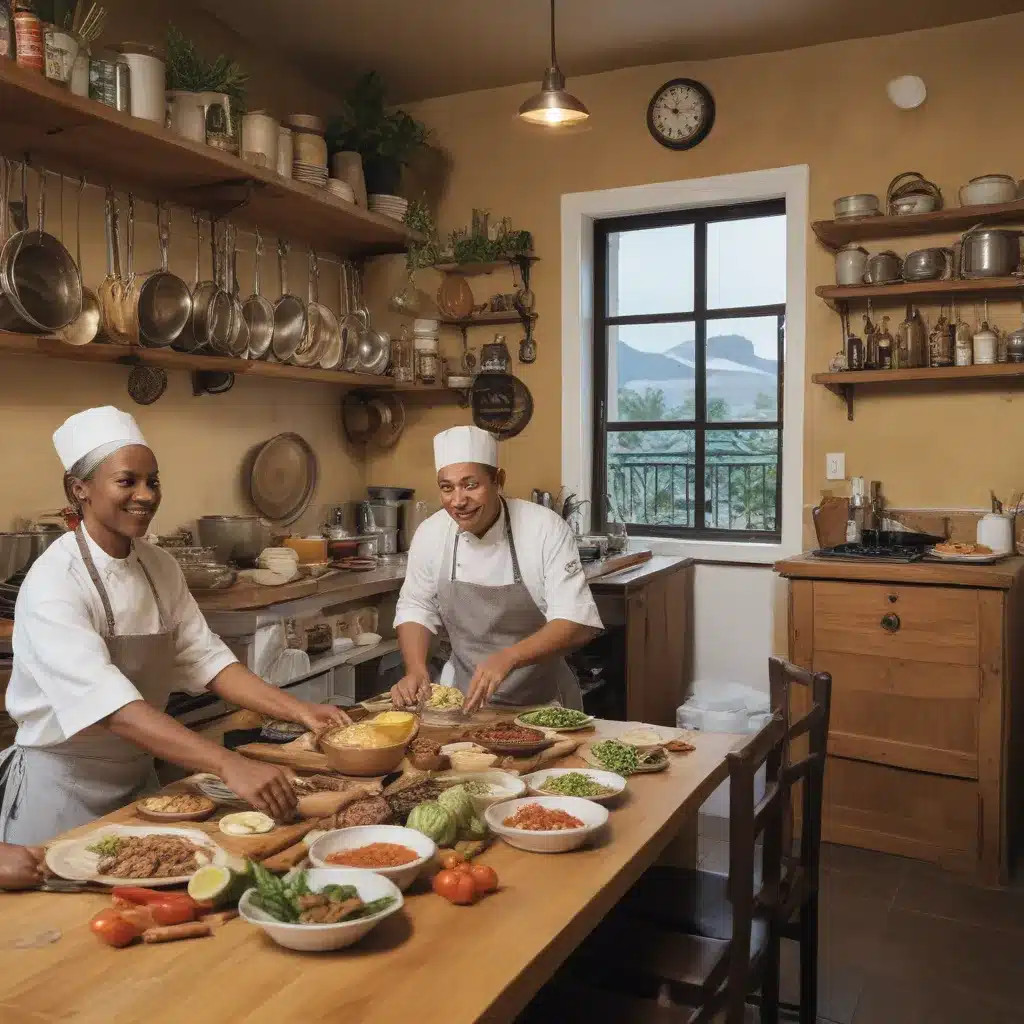
Discovering the Flavors of Morocco in New York City
Have you ever found yourself transported to another world, simply by taking a bite of food? That’s the kind of experience I had when I first stepped into Elbahia, a Moroccan restaurant tucked away in the heart of New York City. From the moment I crossed the threshold, I knew I was in for a culinary adventure that would tantalize my senses and immerse me in the rich cultural tapestry of Morocco.
A Feast for the Senses
As I made my way through the ornately decorated dining room, the air was thick with the intoxicating aromas of spices and simmering tagines. The vibrant colors and intricate patterns that adorned the walls and furnishings felt like a visual representation of the vibrant Moroccan culture. I couldn’t help but let my fingers trace the delicate designs, as if trying to unlock the stories they held.
Elbahia is more than just a restaurant; it’s a portal to a world filled with tradition, hospitality, and a deep appreciation for the art of cooking. The moment I sat down and perused the menu, I knew I was in for a treat. Each dish was a carefully curated symphony of flavors, reflecting the diverse influences that have shaped Moroccan cuisine over the centuries.
Unlocking the Secrets of Moroccan Cuisine
As I delved into the menu, I was struck by the complexity and attention to detail in each offering. The culinary team at Elbahia clearly understood the importance of preserving the authenticity of Moroccan flavors, while also finding ways to present them in a contemporary and captivating manner.
Take, for example, the classic tagine. This slow-cooked stew, simmered to perfection in a distinctive conical clay pot, is a centerpiece of Moroccan cuisine. At Elbahia, the chefs have mastered the art of tagine preparation, transforming humble ingredients like lamb, chicken, or vegetables into dishes that are both comforting and refined.
The secret, I learned, lies in the harmonious blend of spices that infuse the dish. Cumin, cinnamon, ginger, and a touch of saffron come together to create a depth of flavor that is both familiar and exotic. The result is a dish that is simultaneously rich, aromatic, and perfectly balanced – a true reflection of the culinary traditions that have been passed down through generations.
A Cultural Tapestry on the Plate
But Elbahia’s menu goes far beyond the classic tagine. As I continued to explore the offerings, I was struck by the way each dish seemed to tell a story – a snapshot of Moroccan history and culture woven into every bite.
The couscous, for example, is a testament to the country’s long-standing grain cultivation and the ingenuity of its people. The delicate, fluffy grains are infused with a medley of vegetables, herbs, and spices, creating a harmonious blend that pays homage to the diverse agricultural landscape of Morocco.
And then there’s the b’stilla – a savory pie that combines tender chicken, eggs, and a blend of warm spices, all wrapped in a flaky pastry crust. This dish, I learned, originated as a celebratory meal served at weddings and other special occasions, symbolizing the coming together of families and the sharing of cultural traditions.
As I savored each bite, I couldn’t help but feel a sense of connection to the rich tapestry of Moroccan culture. The flavors, the textures, and the stories they conveyed transported me to a world beyond the bustling streets of New York City, one that was imbued with a deep respect for the land, the people, and the culinary artistry that has shaped this remarkable cuisine.
Immersing Myself in Moroccan Hospitality
But the Elbahia experience wasn’t just about the food; it was about the warm, inviting atmosphere that enveloped me from the moment I stepped through the door. The staff, with their genuine smiles and deep knowledge of the menu, made me feel like an honored guest in their cultural home.
As I sipped on a fragrant mint tea and savored the flavors of my meal, I couldn’t help but feel a sense of connection to the Moroccan way of life. The unhurried pace, the emphasis on shared experiences, and the reverence for the art of conversation – it all came together to create a dining experience that was so much more than just a meal.
I found myself engaged in lively discussions with the staff, learning about the origins of the dishes, the significance of certain ingredients, and the role that food plays in Moroccan cultural celebrations. It was as if I had been welcomed into the heart of a Moroccan family, invited to partake in the rituals and traditions that have been woven into the very fabric of their society.
Leaving with a Piece of Morocco
As I reluctantly prepared to leave Elbahia, I couldn’t help but feel a tinge of sadness. The experience had been so immersive, so captivating, that I didn’t want it to end. But as I stepped out into the bustling streets of New York City, I knew that I was carrying a piece of Morocco with me.
The flavors, the stories, and the sense of cultural connection that I had discovered at Elbahia had left an indelible mark on my soul. I couldn’t wait to return, to delve deeper into the culinary wonders of this remarkable country, and to continue my journey of exploration and discovery.
In the end, what Elbahia had given me was not just a delicious meal, but a glimpse into a culture that is rich, vibrant, and endlessly fascinating. It was a reminder that the true essence of a place can be found in its cuisine – a testament to the power of food to transport us, to connect us, and to expand our understanding of the world beyond our own borders.


